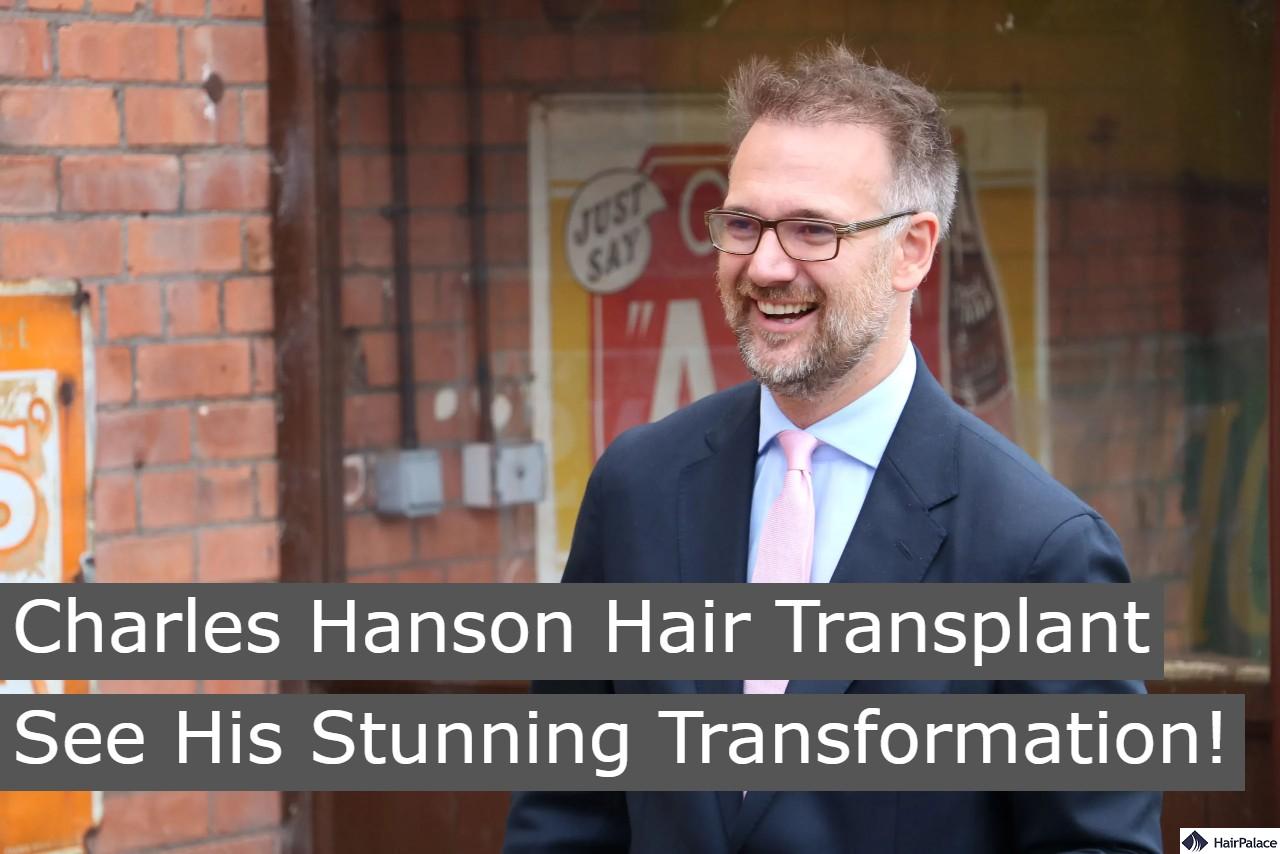Charles Hanson Hair Transplant – See His Stunning Transformation!

- Who is Charles Hanson?
- Why did his hair fall out?
- Hair loss progression
- Did he have a hair transplant?
- Before and after
- Which technique was used?
The star of Bargain Hunt, Charles Hanson has recently made headlines, not just for his expertise in antiques but for his newfound hair growth that has caught the eye of the public.
Was there a Charles Hanson hair transplant?
Join us as we explore Charles Hanson’s hair loss journey, the reasons behind his hair thinning and the possible catalyst behind his stunning transition.
As we uncover the details of Hanson’s experience, we also shed light on the wider implications and advancements in hair restoration techniques.
This article will offer valuable insight and hope to those who might be considering a similar path.

Who is Charles Hanson?
Charles Hanson is a British antique expert who became known through his TV shows, namely Bargain Hunt and Antiques Road Trip.
The television personality is recognized for his enthusiastic and knowledgeable approach to antiques and collectables.
Hanson’s career in antiques began after studying at university, leading him to work for renowned auction houses.
He later established his auctioneering firm, Hansons Auctioneers and Valuers. The company gained popularity and success by selling antiques in the UK.
In addition to his professional pursuits in the world of antique shops, Hanson is also known for his charitable work and often participates in fundraising activities.
Charles Hanson hair loss causes
Charles Hanson’s hair loss most likely happened due to male pattern baldness, which was later sped up by his cancer treatment.
Male pattern baldness is the most common type of genetic hair loss in men. The condition is characterized by a receding hairline and in certain cases it can also cause bald spots on the crown.
On the other hand, hair loss due to cancer treatment, particularly chemotherapy, occurs because these treatments target rapidly dividing cells. This includes both cancer cells and healthy cells like hair follicles.
The severity of hair loss depends on the type and dosage of chemotherapy, and it’s typically temporary. Hair usually regrows after the treatment ends.
Chemotherapy-induced hair loss is usually rapid, and with the hair follicles already weakened by male pattern baldness, the hair loss might occur even faster.
The combined effect of both conditions could lead to more extensive and more pronounced hair loss.
In the case of Charles Hanson, the combined effect of both conditions likely led to the widespread baldness he experienced during his treatment.
Charles Hanson hair over the years
Charles Hanson has been struggling with hair loss for a very long time.
When we take a look at his earlier pictures it’s evident that the star auctioneer’s hair has been thinning for years even before he became known.

Using the Norwood scale to classify Charles Hanson’s hair loss he seems to be between stage 3 and stage 4.
Looking at the picture above and below it’s clear that he had a rapidly receding hairline and a pronounced widow’s peak.

His hair loss was made worse by getting testicular cancer in his early 30s. His cancer diagnosis was followed by repeated chemotherapy, which is known to cause hair loss and increased hair shedding.
There are no photos available from the time he was battling with this illness. Thankfully his treatment at Royal Derby Hospital was successful and he regained his health.

However, fans noticed something peculiar about his appearance once he returned to television on Bargain Hunt.
Namely, Charles Hanson was sporting new hair which appeared much thicker and healthier than perhaps ever before. This led fans to speculate about a possible Charles Hanson hair transplant.
Why did Charles Hanson get a hair transplant?

Charles Hanson remained tight-lipped about his procedure. We don’t know for sure whether he had surgery.
However, the before and after photos show such a vast contrast that it’s hard to imagine he didn’t undergo the procedure.
It would have been understandable to treat such extensive baldness even before he suffered from cancer.
While hair loss from chemotherapy is usually temporary, male pattern baldness leads to permanent hair loss.
The former likely gave him the last push he needed to take matters into his own hands with the help of a modern hair transplant procedure.
Charles Hanson hair transplant before and after

Which technique did he choose?
While it’s still unknown whether Charles Hanson had a hair transplant procedure the before and after photos are a clear indication of surgery.
If he indeed had the procedure, it’s almost certain that he chose the revolutionary FUE technique.
FUE is a hair transplant method that involves extracting individual hair follicles from the back of the scalp. These hairs are then transplanted into the areas affected by baldness.
This technique is highly advanced and differs significantly from the older Follicular Unit Transplantation (FUT) or strip surgery method.
The donor area is shaved to facilitate the extraction process. This makes it easier to access and remove the individual follicles.
Using a specialized micro-surgical extraction instrument, individual follicular units are removed directly from the scalp in their naturally occurring groups.
The tool makes a tiny circular incision around the follicle to isolate the graft. The follicle is then extracted directly from the scalp.
Tiny incisions are made in the balding areas (recipient sites) of the scalp in a pattern that mimics natural hair growth.
The extracted follicular units are then placed into the recipient sites. Care is taken to place them at the proper depth and angle to promote a realistic hair pattern.
Main Advantages of FUE
- Minimal Scarring: FUE leaves tiny scars at the extraction site that are almost invisible to the naked eye, especially compared to the linear scar left by FUT. This is a significant advantage for those who prefer short hairstyles.
- Reduced Recovery Time: Due to the less invasive nature of the technique, the recovery time is usually shorter compared to FUT.
- Less Pain and Discomfort: Patients typically experience less pain during and after the procedure, with many reporting minimal discomfort.
- No Stitches Required: Since FUE does not involve removing a strip of scalp, there are no stitches required, which contributes to a quicker and more comfortable recovery.
- Natural-Looking Results: The precise placement of individual follicular units allows for a very natural-looking hairline and hair density.

Other celebrity hair transplant stories
Last medically reviewed on April 23rd, 2024



